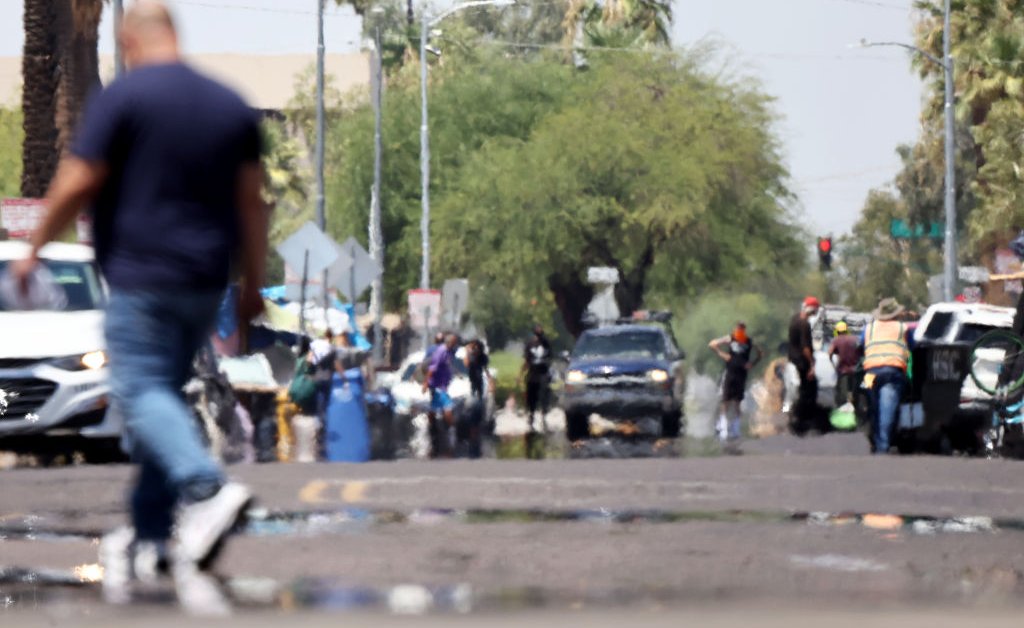Addressing The Extreme Heat Crisis: The Importance Of Local Efforts

Welcome to your ultimate source for breaking news, trending updates, and in-depth stories from around the world. Whether it's politics, technology, entertainment, sports, or lifestyle, we bring you real-time updates that keep you informed and ahead of the curve.
Our team works tirelessly to ensure you never miss a moment. From the latest developments in global events to the most talked-about topics on social media, our news platform is designed to deliver accurate and timely information, all in one place.
Stay in the know and join thousands of readers who trust us for reliable, up-to-date content. Explore our expertly curated articles and dive deeper into the stories that matter to you. Visit Best Website now and be part of the conversation. Don't miss out on the headlines that shape our world!
Table of Contents
Addressing the Extreme Heat Crisis: The Importance of Local Efforts
The world is getting hotter. Extreme heat events, once considered anomalies, are becoming increasingly frequent and intense, posing a significant threat to public health, infrastructure, and the economy. While global action is crucial to mitigating climate change – the root cause of this crisis – local efforts are equally vital in addressing the immediate impacts and building resilience. This article explores why local initiatives are paramount in combating extreme heat and offers practical examples of effective strategies.
The Urgency of Local Action:
Global climate agreements and national policies are essential, but their impact often unfolds slowly. Local communities, however, experience the direct consequences of extreme heat immediately. Heat waves disproportionately affect vulnerable populations – the elderly, the chronically ill, the homeless, and low-income communities – who often lack access to resources necessary to cope with extreme temperatures. Therefore, localized strategies offer a timely and targeted response to this pressing issue.
Effective Local Strategies for Combating Extreme Heat:
Several proven strategies can significantly reduce the impact of extreme heat at the local level:
-
Early Warning Systems: Implementing robust early warning systems is crucial. This involves accurate weather forecasting, targeted communication channels (SMS alerts, community radio announcements), and proactive outreach to vulnerable populations. The effectiveness of these systems relies on collaboration between meteorological agencies, local governments, and community organizations.
-
Cooling Centers and Public Spaces: Establishing easily accessible cooling centers – libraries, community centers, or dedicated facilities – provides vital refuge during heat waves. Likewise, increasing green spaces, urban forests, and shaded areas in public spaces reduces the urban heat island effect, creating cooler microclimates. .
-
Public Health Campaigns: Educating the public about heat-related illnesses, preventative measures (hydration, seeking shade), and recognizing symptoms is crucial. Targeted campaigns should reach vulnerable groups, emphasizing the importance of heat safety.
-
Infrastructure Improvements: Investing in sustainable infrastructure, such as reflective roofs, green infrastructure, and energy-efficient buildings, can significantly mitigate the urban heat island effect. This requires collaboration between urban planners, architects, and local authorities.
-
Community Partnerships: Collaboration is key. Successful heat mitigation strategies require close cooperation between government agencies, non-profit organizations, healthcare providers, and community leaders. Engaging local communities in planning and implementation ensures that strategies are tailored to specific needs and vulnerabilities.
Case Studies: Successful Local Initiatives:
Many cities around the globe are leading the way in implementing effective heat action plans. For instance, Phoenix, Arizona, has developed a comprehensive heat response plan including early warning systems, expanded cooling centers, and public awareness campaigns. Similarly, [link to another successful city's initiative]. These examples highlight the potential for effective local action.
Conclusion: A Collective Responsibility:
Addressing the extreme heat crisis requires a multi-pronged approach. While global action is vital for long-term climate change mitigation, local initiatives are critical for immediate impact and building community resilience. By implementing effective strategies and fostering collaboration, communities can significantly reduce the risks associated with extreme heat, protecting vulnerable populations and ensuring a safer, more comfortable future for all. Let's prioritize local action – it's a matter of life and death.
Call to Action: Learn more about heat-related safety measures in your community and how you can contribute to local initiatives. Contact your local government representatives to advocate for improved heat action plans.

Thank you for visiting our website, your trusted source for the latest updates and in-depth coverage on Addressing The Extreme Heat Crisis: The Importance Of Local Efforts. We're committed to keeping you informed with timely and accurate information to meet your curiosity and needs.
If you have any questions, suggestions, or feedback, we'd love to hear from you. Your insights are valuable to us and help us improve to serve you better. Feel free to reach out through our contact page.
Don't forget to bookmark our website and check back regularly for the latest headlines and trending topics. See you next time, and thank you for being part of our growing community!
Featured Posts
-
 Intcs 35 Fall A Deep Dive Into Intels Stock Performance And Future Prospects
Jun 11, 2025
Intcs 35 Fall A Deep Dive Into Intels Stock Performance And Future Prospects
Jun 11, 2025 -
 Intel Stock Down 35 What Investors Should Do
Jun 11, 2025
Intel Stock Down 35 What Investors Should Do
Jun 11, 2025 -
 White House Responds To Claims Of Musk Physically Confronting Treasury Secretary
Jun 11, 2025
White House Responds To Claims Of Musk Physically Confronting Treasury Secretary
Jun 11, 2025 -
 2024 Nba Mock Draft Balancing Value And Team Needs
Jun 11, 2025
2024 Nba Mock Draft Balancing Value And Team Needs
Jun 11, 2025 -
 Alcarazs Epic Fightback Why His French Open Performance Defines 2024
Jun 11, 2025
Alcarazs Epic Fightback Why His French Open Performance Defines 2024
Jun 11, 2025
